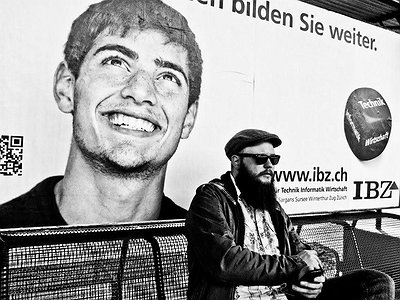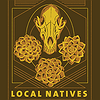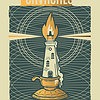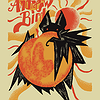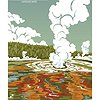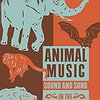Part 1
Name: Travis Bone (Furturtle Show Prints)
Occupation: Illustrator/Designer/Printmaker
Nationality: American
Current Release: Summer Camp 2017
Recommendations: I am going to limit this to pieces that I have come into contact with over the past year. A lifetime of art that I think people should know about is just too much to parse through. I really like this band, Big Thief. Check them out for your musics. For your books, read Norse Mythology by Neil Gaiman.
Website: If you enjoyed this interview with Travis Bone, be sure to visit his website www.furturtle.com for more information and current gig dates.
When did you start creating designs and layouts for music - and what or who were your early passions and influences? What is it about the relationship between music and design that draws you in?
I guess I started when I was in high school. Making doodles for shirt designs, CD jackets for live bootlegs I had, and finding weird images to slap some text onto to make “poster” designs for the band I was in. I sort of dropped it when I went to college to make real money but picked it up a few months later when I realized that I enjoyed doing it. My early poster influences were Ames Brothers, Hatch Show Print and Gary Houston of Voodoocatbox. I had picked up some of their posters from shows that I went to. They were different than the slick, cheap posters that I was used to seeing at a merch table. I was fascinated at first sight and sort of became a collector.
I am not sure that I could pinpoint what I love most about the relationship between music and design. Maybe the earnestness imparted to a record by really fantastic package design? Maybe the randomness of a visual artist’s interpretation of the music’s vibe and how it may differ from my own outlook on it?
For most artists, originality is first preceded by a phase of learning and, often, emulating others. What was this like for you? How would you describe your own development as an artist and the transition towards your own voice? What is the relationship between copying, learning and your own creativity?
I feel like my approach, at least when it comes to posters, was more influenced by the limitations imposed on me by my terrible, homemade screen-printing setup. There were a lot of artists that inspired me but the idea that I could do what they were doing, with my limited skillset, was laughable to me. I figured I would be better off using the influence as a broad approach and developing my style more organically.
What were your main design-challenges in the beginning and how have they changed over time?
My main challenge then and now is getting what is in my head into a physical form.
What makes for a great music related design? What are the differences in terms of approach for different formats like posters, flyers and covers?
I tend to gravitate toward the bold and simple, which in a lot of ways, is a somewhat failed model based on current trends; these days it’s the more lines, the better. It seems massively subjective to me.
What kind of relationship is there between the cover of a release and the music? What can the visual layer add to the music or how can it even change it? Would you say the end result is an art work in its own right, a fusion or merely a support of the music?
A strong album cover should add to the music, support the music, and be a piece of art by its own right.
How do you make use of technology? In terms of the feedback mechanism between technology and creativity, what do humans excel at, what do machines excel at?
I use technology as a tool, like a paintbrush or a pencil. Humans excel at imagining what could be and machines just help that become a reality. There isn’t anything that I do on a computer that I couldn’t do without one if I had to.
Collaborations can take on many forms. What role do they play in your approach and what are your preferred ways of engaging with the artists you're working for?
Every new client and project begins a new collaboration. Sometimes I have complete creative freedom and other times I don’t. I enjoy working directly with bands but most of the time I am working with management.
Could you take us through a day in your life, from a possible morning routine through to your work? Do you have a fixed schedule? How do music and other aspects of your life feed back into each other - do you separate them or instead try to make them blend seamlessly?
I don’t really have a fixed schedule just because of the variety of work I do. I try to be up by 7:30 and finished with work about twelve hours later, depending on the workload. Depending on the season, my time in the print shop can vary, but most of the time I am printing at night to avoid the daytime heat.
Could you describe your creative process on the basis of a piece or album that's particularly dear to you, please? Where did the ideas come from, how were they transformed in your mind, what did you start with and how do you refine these beginnings into the finished work of art?
I worry. I sketch. I fret. Eventually I may have something rendered from an idea that I like. I just try to feel it all out while I am putting the idea together. Knowing when to abandon an idea and start a new direction is a big part of that. Ideas come from wherever they come from. You live and take little mental snapshots. You save it all for later.
There are many descriptions of the ideal state of mind for being creative. What is it like for you? What supports this ideal state of mind and what are distractions? Are there strategies to enter into this state more easily?
Distractions contribute to my ideal state of mind. I need clutter and chaos to focus. I like the feeling, when an illustration or design is going really well, that I could be torn out of the moment at any second.
Do you tend to listen to the music in question a lot or at all while working on the project? Is your approach more guided by the emotions or ideas stirred by the music or conceptual considerations?
That depends on how much I like the music.
What kind of materials have proven to be particularly effective to work with? Do you maintain an archive of materials for potential use in future projects? If so, what does it consist of and what are your criteria for adding something to it?
I am pretty basic when it comes to materials. Ink, paper, emulsion, and film pretty much covers it.
Our sense of hearing shares intriguing connections to other senses. From your experience, what are some of the most inspiring overlaps between different senses - and what do they tell us about the way our senses work? What happens to sound at its outermost borders?
I guess I live in that overlap between sights and sounds. I mean, they all overlap to some extent. It is all data from different sources going into the same wrinkled little computer brain.
Art can be a purpose in its own right, but it can also directly feed back into everyday life, take on a social and political role and lead to more engagement. Can you describe your approach to art and being an artist?
I don’t do a lot of art for the sake of art. I wish I did. I wish, especially in these times in my country, that I could connect my political and social ideals to my creativity. I am working on it. I am building up to it.
It is remarkable, in a way, that we have arrived in the 21st century with the basic concept of music design still intact. Do you have a vision of it, an idea of what it could be beyond its current form?
I can’t say that I do. I am just trying my best to do something that might mean something to someone. That is one hell of a motto right? “Try to do something that might mean something to someone” Put that on a plaque.



